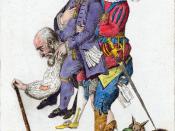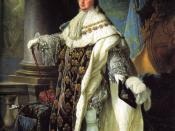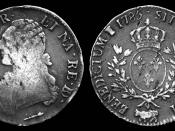Social factors contributed to the French Revolution of 1789
Although social tensions within France certainly contributed to the revolutionary situation in August 1789 it was not the only contributing factor. Divisions and inequality between, as well as within, the Three Estates created an atmosphere of disharmony while the influence of the enlightenment and liberal ideas fueled the growing discontent of the Estates toward the government and Louis XVI. However, political factors, like the undermining of the Kings power as well as economic factors, such as the chaotic nature of the taxation system exacerbated the social tensions and combined created a revolutionary situation.
The Ancien Regime was riddled with social inequalities and therefor-growing discontent. Out of a population of around 25 million the First and Second Estates, which consisted of approximately 400,000 members, were largely exempt from taxes, such as the taille and the corvee, despite the fact they were the wealthiest estates.
This left the burden of supporting the country to the (overall) poorest estate: the Third estate. Much of the Third Estate were alienated by the Nobility during the 18th C when, because of inflation, they increased feudal dues and sought new ways in which to extract money from the peasants at the same time as rising food prices and bad harvests crippled their incomes. The bourgeois were also prevented from obtaining high-ranking positions in the army, navy and the Church as the Nobility held these. As an added burden to the feudal dues many peasants paid they were also required to pay a tithe, one-tenth of their income, to the church as well as a vingtieme, taille, capitation and gabelle to the government. As the price of food surged their incomes did not, leaving many peasants struggling to get by. This combined with he fast growing population...


